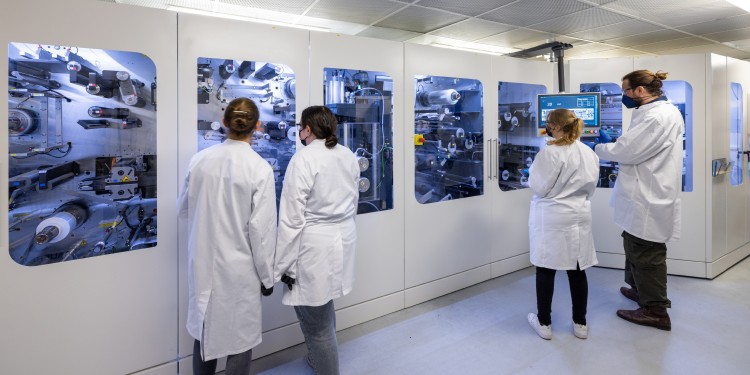
New Battery Line for Processing of Lithium Metal at MEET Battery Research Center
Lithium metal and solid-state batteries are considered as batteries of the future. While scientists continue to develop the technology of the different battery types, their production still involves numerous challenges. A new production line at MEET Battery Research Center at the University of Münster now enables cell construction of these new battery types and expands production research at the site. On a total of 150 m² dry room space researchers are working with in Germany unique equipment, providing an attractive cooperation platform for science and industry.
New Battery Cell Types Require Special Production Processes
The production processes of so-called post-lithium-ion batteries such as lithium-sulphur or solid-state batteries differ significantly from the production of the market-dominating lithium-ion batteries. Procedures such as electrode fabrication, cell construction or charge and discharge cycling require different techniques, manufacturing environments or machines. The new battery line at MEET Battery Research Center enables exactly this: The 8-meter-long specialized equipment allows researchers to work on techniques for lamination, separation and stacking for next-generation batteries. A multilayer lithium metal battery cell is the first cell design to be developed. Dr Markus Börner, Head of the Division “Cell System” at MEET Battery Research Center, explains: “Single-layer lithium metal battery cells on a laboratory scale are common practice to investigate active materials and other cell components. The challenge is to produce multilayer cells for use in electric cars, for example. Lithium metal is a very soft material that reacts quickly, which is why common steps in battery cell production require special technologies.”
In addition to its research on battery cell production of lithium-ion batteries, the MEET team is thus intensifying its work on next-generation cell construction. Prof. Dr Martin Winter, Scientific Director of MEET Battery Research Center, says: “It is our goal to set up a continuous production line for manufacturing of next generation batteries. In doing so, we are providing fundamental knowledge for the production of battery cells in Europe.”
Dry Room Climate for Battery Cell Production
The new battery line at MEET Battery Research Center is located in a dry room with a maximum water-free atmosphere. The high-energy and sensitive battery materials must be protected from dust particles and, above all, humidity. In a complex process, the air is therefore dehumidified via a silica gel drying wheel and reintroduced into the rooms at a dew point of minus 60 degrees Celsius, which is the equivalent of a relative humidity of approximately 0,02%. With the addition of 50 m² dry room space, MEET researchers now have a total of 150 m² of specially air-conditioned laboratory space with various production lines in lab- and pilot-scale at their disposal.
The expansion of the dry room at MEET Battery Research Center is part of the “ProLiFest project – refinement and processing of lithium foils and electrodes for solid-state batteries” – funded by the German Federal Ministry of Education and Research.
